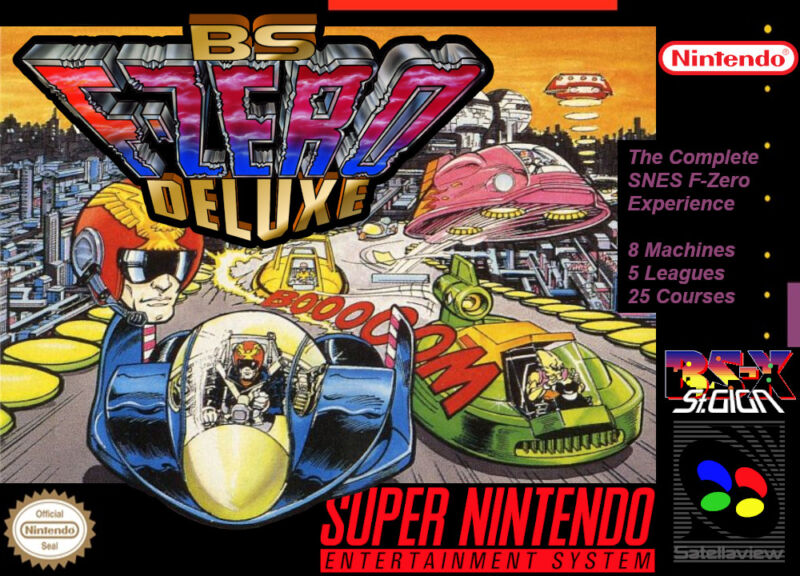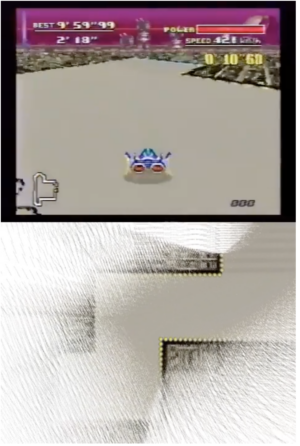
Guy Perfect, Power Panda, Porthor
Nintendo's Satellaview, a Japan-only satellite add-on for the Super Famicom, is a rich target for preservationists because it was the home to some of the most ephemeral games ever released.
That includes a host of content for Nintendo's own games, including F-Zero. That influential Super Nintendo (Super Famicom in Japan) racing title was the subject of eight weekly broadcasts sent to subscribing Japanese homes in 1996 and 1997, some with live "Soundlink" CD-quality music and voiceovers. When live game broadcasts were finished, the memory cartridges used to store game data would report themselves as empty, even though they technically were not. Keeping that same 1MB memory cartridge in the system when another broadcast started would overwrite that data, and there were no rebroadcasts.
Recordings from some of the F-Zero Soundlink broadcasts on the Satellaview add-on for the Super Famicom (Super Nintendo in the US).
As reported by Matthew Green at Press the Buttons (along with Did You Know Gaming's informative video), data from some untouched memory cartridges was found and used to re-create some of the content. Some courses, part of a multi-week "Grand Prix 2" event, have never been found, despite a $5,000 bounty offering and extensive effort. And yet, remarkably, the 10 courses in those later broadcasts were reverse-engineered, using a VHS recording, machine learning tools, and some manual pixel-by-pixel re-creation. The results are "north of 99.9% accurate," according to those who crafted it and exist now as a mod you can patch onto an existing F-Zero ROM.
A re-creation of the "Forest I" level from the lost Satellaview broadcasts, running in a modified F-Zero ROM.
F-Zero Deluxe, as the patched version is called, includes four new racing machines on top of the original four. There are two new "BS-X" Leagues with all the resurrected Satellaview race tracks. And there is "ghost data," or the ability to race against one of your prior runs on a course, something that F-Zero games helped make popular and was subsequently picked up by other racing games. There is even box art and an instruction booklet. It is a notable feat of game preservation. It thereby makes us nervous that Nintendo and its attorneys will take notice, but one can hope.
Guy Perfect
Using Graphite as inspiration and having the data from the original Grand Prix broadcast as a baseline, an F-Zero superfan going by Guy Perfect built a tool that could reproduce the controller input from a miraculous VHS copy of the missing second Grand Prix. Following this reverse-project process, Guy Perfect re-created most of the courses and then fine-tuned them with manual frame-by-frame authoring. The backgrounds on the courses required the work of a pixel artist, Power Panda, to finish the package, and Porthor to round out the trio.
Their work means that, 25 years later, a moment in gaming that was nearly lost to time and various corporate currents has been, if not entirely restored, brought as close as is humanly (and machine-ably) possible to what it once was. Here's hoping the results, which by all indications are fan-created and non-commercial, stick around for a while.